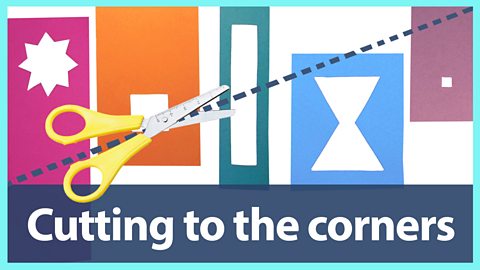Learn how to cut scallop fringing from paper or card
Scallop fringes add rounded shapes and soft texture to your artwork.
This is the fiddliest of the fringing types but with our top tips and a bit of practice you too can master it!


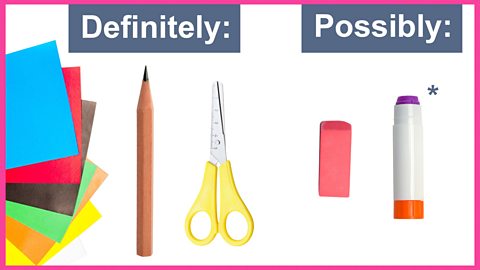
- Paper or card
- Pencil
- Scissors
If you want to rub out your pencil marks you will need a rubber. When putting your piece together you might also need glue*.
*(sticky tape and pva glue can also work)

For a quick overview, check out the video: Make your own paper fringes
To work at your own pace, follow the slideshow instructions below:
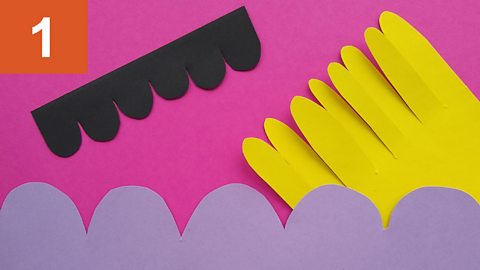
Image caption, Decide how long and wide you want your scallop fringe to be and choose your paper
For example, you might cut long, thin scallops for feathers but short, chunky scallops for a bumpy path or scales.
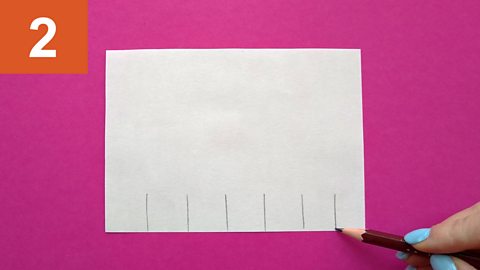
Image caption, Draw straight lines along the side of the paper that you want to turn into a scallop fringe
Each scallop will fit between two lines. For a thin, long fringe draw the lines long and close together. For a short, chunky fringe draw the lines short and far apart.
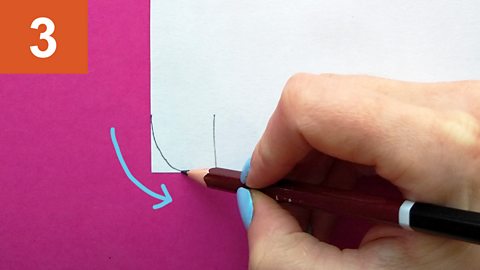
Image caption, Draw a curvy line from one side of the paper down to the bottom edge, stopping halfway to the next line
If you are struggling to find the halfway point, you could add an extra line or mark to show it. If you are left-handed you might want to start from the other end of your paper.
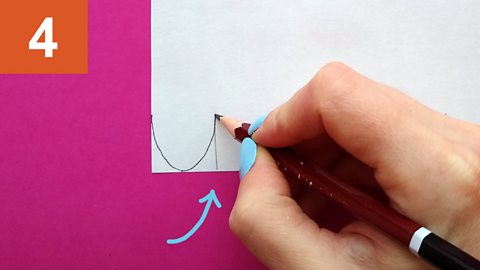
Image caption, Draw that curvy line back up to the top of the next line
Your curve should look like a 'U' shape.
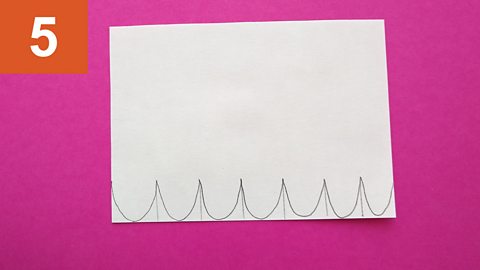
Image caption, Repeat: Draw 'U' curves between the lines all along your paper
Don't worry about making them all exactly the same - the fringe will still look good!
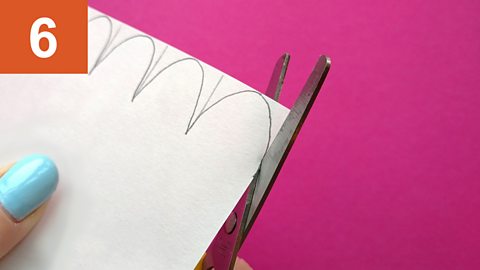
Image caption, Turn your paper around and put your open scissors at the start of the first curve
Keep the fingers of your other hand far away from the scissors!
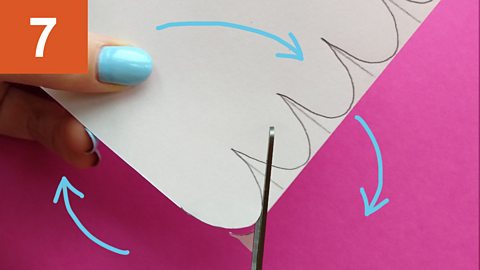
Image caption, Move the paper around using your other hand as you cut along the curvy line
Keep your scissors in the same comfortable position in front of you. Using your other hand to move the paper around will make it easier to cut along the line.

Image caption, Keep on going until your scissors reach the middle bit between two scallops
Stop with your scissors half closed to keep the end of the cut neat. Sometimes you can tear the paper if you snip the scissors fully shut.
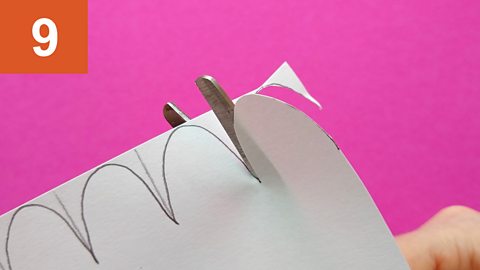
Image caption, Gently turn the paper back around so the scissors are facing the next curve and start cutting again
Keep your scissors still and move the paper with your other hand.
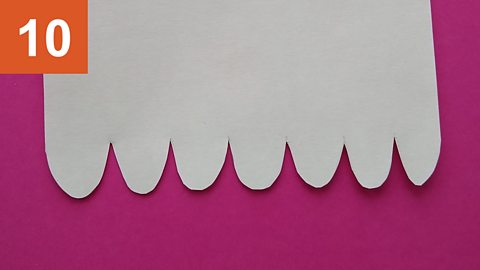
Image caption, Repeat: Cut along the paper until you reach the end... Finished!
What will you you use it for?
1 of 10
Scallops in 3D work
You can also add tabs to your scallops to make them stand up:
One long tab makes a straight scallop fringe
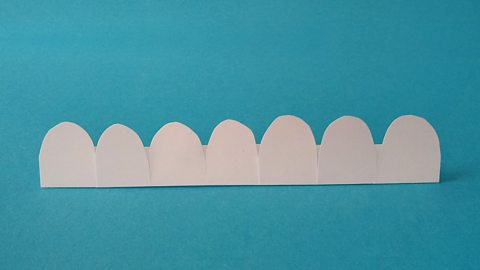

Lots of tabs makes a curvy scallop fringe
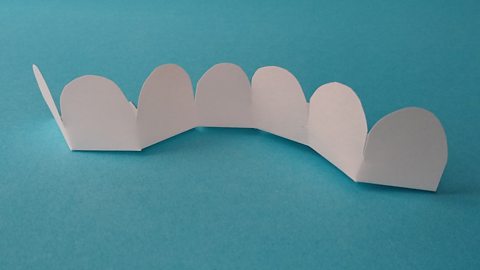
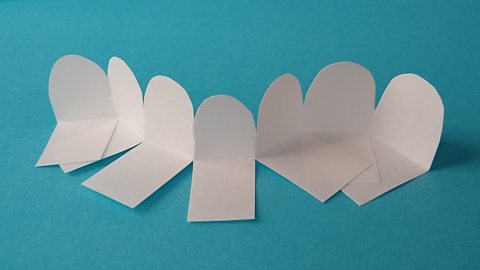
(For more help with making tabs check out our strip fringing article.)
Artwork examples

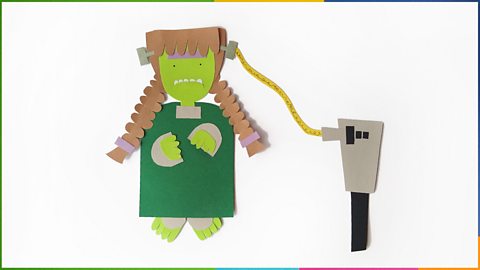
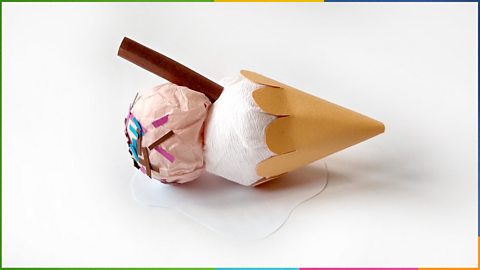


Here are a few common problems and how to fix them:
Tip 1: Is your paper tearing?
It can be hard to cut the middle bits between each scallop without tearing the fringe.
Tip: Cut along the straight lines between the scallops and then cut the curves.
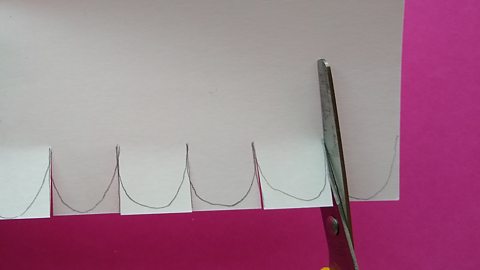
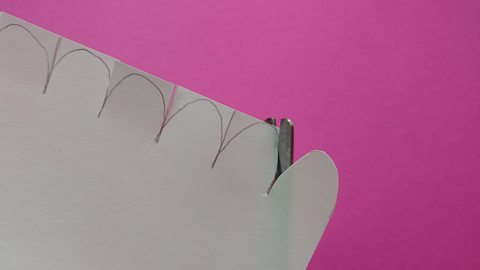
Tip 2: Do you have pencil marks?
If you have pencil marks left on your scalloped fringe after you cut it, there are two options:
Flip it over to hide the marks (but this is only useful if you won't see the other side)
Use a rubber
Tip: If you use a rubber, only rub in one direction: from the paper out to the edges of the fringe.
This will prevent you from creasing or tearing your fringe.
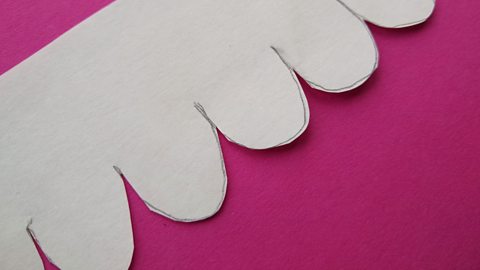
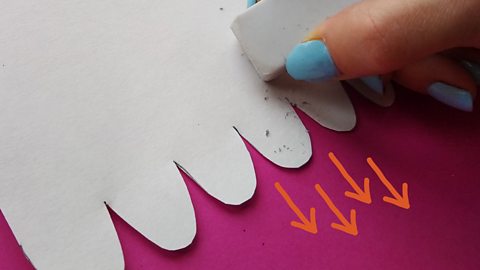
Learning recap

You can change the length and width of your scallops to create different looks.
You can also add tabs to your scallop fringe to build sturdy 3D forms that keep their shape.
For more help with making tabs check out our guide to making strip fringes.
More on Design activity
Find out more by working through a topic
- count5 of 11

- count6 of 11

- count7 of 11
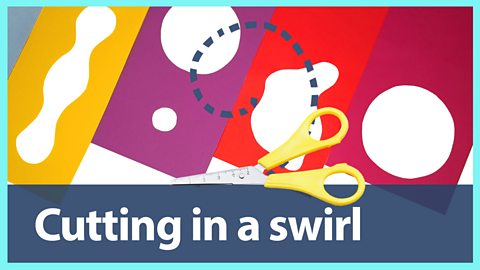
- count8 of 11
